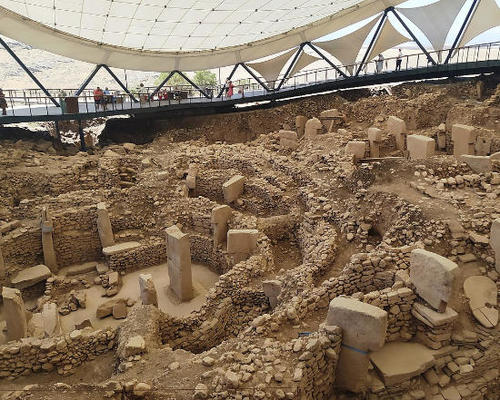Geomorphology and the Early Human Life I
Göbekli Tepe archaeological site, Turkey
Image Credit: Radosław Botev CC BY 3.0 PL
In the region around Göbekli Tepe (southeastern Turkey), traces of human use can be traced back to the early Neolithic period. The data documented here serve to better understand the geomorphological development processes of the region, taking into account human as well as climatic influences. For this purpose, different sedimentation areas were investigated with regard to their depositional history and age dating was carried out in order to better correlate this with settlement activities.
The data
The data set includes the descriptions and laboratory measurements of several sediment profiles. In addition to detailed descriptions of sediment composition and structures, geochemical parameters (pH, electrical conductivity, loss on ignition, and magnetic susceptibility) and measurements of total carbon, total inorganic carbon, and element concentrations in fine material (< 2 mm) were published.
Publication of the data set: Nykamp, M et al (2020) https://doi.org/10.1016/j.dib.2020.106012
Research results
With the data, the geomorphological development in the vicinity of the Neolithic site of Göbekli Tepe could be traced on the basis of radiocarbon dated sediment profiles from the immediate vicinity. Five geomorphologically active phases could be distinguished for the Holocene.
For example, the slope sediments are characterized by soil creep and slope alluvium. Further downstream, deposition by rivers predominates. The slope sediments were deposited mainly during the Roman and Byzantine periods, while the foothill sediments cover the period from the Bronze Age to the Roman period.
Phases of geomorphological activity and stability could also be distinguished during the later Holocene. These phases coincide with the Bronze Age in Anatolia and with population growth, pronounced human influence, and increasing aridity in this area of present-day Turkey.
Publication of the journal article: Nykamp, M et al (2020) https://doi.org/10.1016/j.catena.2020.104759
Texts modified after: Nykamp, M et al (2020) https://doi.org/10.1016/j.catena.2020.104759
